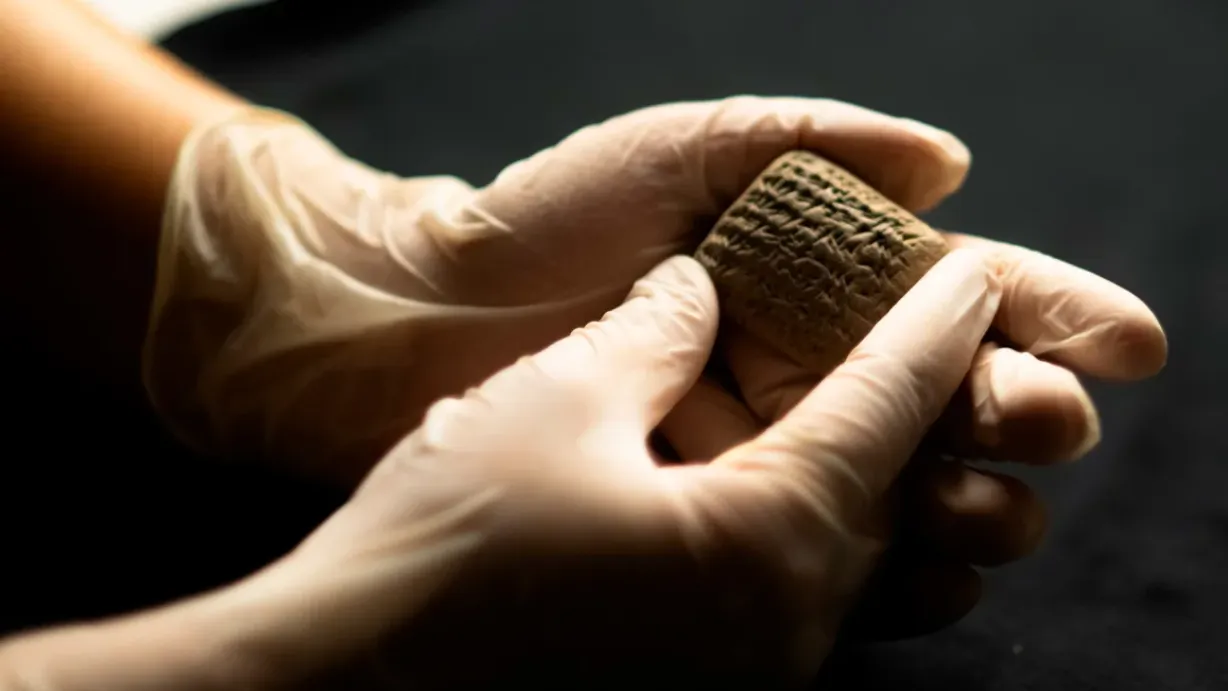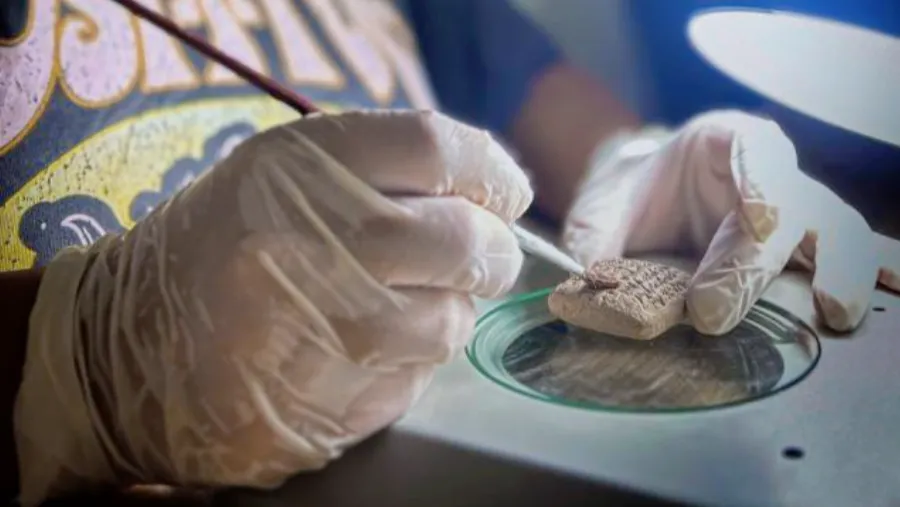
Archaeologists Uncover 3,500-Year-Old Clay Tablet Following Earthquake in Turkey

In a remarkable archaeological discovery, experts have unearthed a minuscule clay tablet dating back 3,500 years at a site in Turkey. This ancient artifact, inscribed with cuneiform writing, offers a rare glimpse into life during the Late Bronze Age and could provide invaluable insights into the era’s economic and administrative systems.
Cuneiform is one of the earliest known writing systems, originating in Mesopotamia, now modern-day Iraq. This ancient script was employed across the ancient Middle East to record languages such as Sumerian and Akkadian. Highly skilled scribes etched these distinctive wedge-shaped characters onto clay tablets using reed styluses, preserving a range of information from legal documents to administrative records.
The recently discovered tablet, dating to the 15th century BC, is believed to have served as a detailed receipt for furniture purchases. Written in Akkadian cuneiform, it describes a significant transaction involving a large quantity of furniture. Weighing just 28 grams and measuring 1.7 inches by 1.4 inches (4.2 cm by 3.5 cm), with a thickness of 0.6 inches (1.6 cm), this compact tablet is a crucial piece of evidence for understanding the economic structure and state systems of the Late Bronze Age.

According to Mehmet Ersoy, Turkey’s Minister of Culture and Tourism, this artifact will enhance our understanding of the period’s economic practices. The tablet was found outside the gate of the ancient city of Alalakh, now known as Tell Atchana, during restoration efforts following devastating earthquakes. The find is particularly notable as it emerged amidst the recovery process after these natural disasters, highlighting the role of archaeology in community healing and restoration, as noted by excavation leader Dr. Murat Akar.
The city of Alalakh was first excavated in the 1930s by British archaeologist Sir Leonard Woolley, who discovered a significant archive of cuneiform tablets. Dr. Jacob Lauinger from Johns Hopkins University explains that the new tablet may originate from either the same archive or another previously unexplored one within the fortress. Lauinger, along with Zeynep Türker, a doctoral student, and Dr. Akar, are working on translating and analyzing the tablet. Their preliminary findings reveal a purchase of around 200 wooden tables, chairs, and stools, indicating a scale of production not previously documented in Alalakh.
The discovery offers a unique window into ancient administrative practices, akin to ancient bookkeeping. Researchers are now exploring how this substantial furniture order fits into the broader context of the city’s historical activities. They are considering whether this order was related to a special event, such as a royal wedding or religious festival, or if Alalakh was producing furniture for export.

The site of Tell Atchana has faced significant challenges over the decades. After Woolley’s excavations ended in the late 1940s, the site fell into disrepair, overgrown by dense vegetation. Efforts to preserve and restore the ancient city have been ongoing since 2012, with additional preservation work intensified after the earthquakes in early 2023. These quakes, including a devastating 7.8-magnitude tremor, caused widespread destruction across southeastern Turkey and northern Syria, underscoring the importance of safeguarding historical sites amidst modern calamities.
The newly discovered tablet stands as a testament to the rich history of Alalakh and provides a tangible link to a bygone era, highlighting the ongoing importance of archaeological research in uncovering and preserving our shared heritage.






